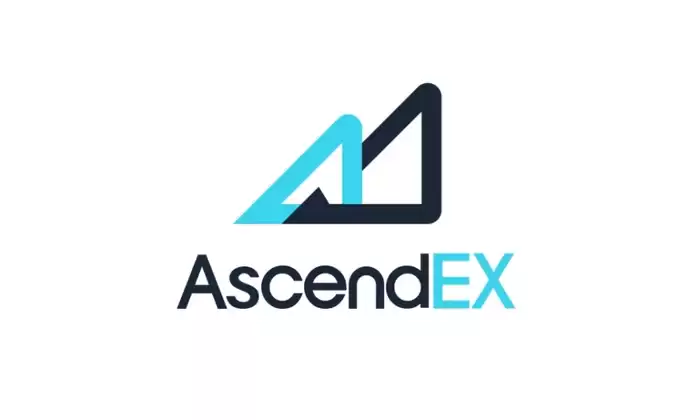-
 Bitcoin
Bitcoin $118300
0.75% -
 Ethereum
Ethereum $4544
3.21% -
 XRP
XRP $3.128
-0.31% -
 Tether USDt
Tether USDt $1.001
0.02% -
 BNB
BNB $861.4
3.94% -
 Solana
Solana $192.2
3.12% -
 USDC
USDC $1.000
0.01% -
 Dogecoin
Dogecoin $0.2332
0.92% -
 Cardano
Cardano $0.9702
6.55% -
 TRON
TRON $0.3513
-0.44% -
 Chainlink
Chainlink $24.69
14.60% -
 Hyperliquid
Hyperliquid $47.42
1.65% -
 Stellar
Stellar $0.4307
0.74% -
 Sui
Sui $3.826
3.32% -
 Bitcoin Cash
Bitcoin Cash $590.6
0.12% -
 Ethena USDe
Ethena USDe $1.001
-0.01% -
 Hedera
Hedera $0.2560
2.83% -
 Avalanche
Avalanche $24.84
4.94% -
 Litecoin
Litecoin $122.0
2.95% -
 Toncoin
Toncoin $3.493
0.20% -
 UNUS SED LEO
UNUS SED LEO $9.460
-1.09% -
 Shiba Inu
Shiba Inu $0.00001316
2.12% -
 Uniswap
Uniswap $11.19
2.94% -
 Polkadot
Polkadot $4.059
3.61% -
 Dai
Dai $1.000
0.00% -
 Bitget Token
Bitget Token $4.686
2.09% -
 Cronos
Cronos $0.1530
2.18% -
 Monero
Monero $267.4
11.83% -
 Ethena
Ethena $0.7250
0.52% -
 Pepe
Pepe $0.00001121
3.26%
AscendEX contract trading method
Contract trading on AscendEX empowers traders with leverage, allowing them to amplify their potential profits and losses while speculating on the future price direction of cryptocurrencies.
Nov 24, 2024 at 02:58 pm

AscendEX Contract Trading Method
Contract trading is a prevalent aspect of cryptocurrency exchanges, allowing traders to speculate on the future price of an underlying asset without owning it directly. AscendEX, a leading cryptocurrency exchange, offers a comprehensive contract trading platform for traders of all levels.
This article will provide a comprehensive guide to AscendEX's contract trading method, covering key concepts, steps involved, and strategies for successful trading.
Key Concepts: A Primer on Contract Trading
- Futures Contracts: Futures contracts are standardized agreements to buy or sell an underlying asset, such as Bitcoin or Ethereum, at a predetermined price on a specific date. The futures price reflects the market's expectations of the asset's future value.
- Leverage: Contract trading involves a concept called leverage, which allows traders to amplify their potential profits or losses by borrowing funds from the exchange to increase their trading position. It's essential to exercise caution with leverage, as it magnifies both gains and losses.
- Long and Short Positions: In contract trading, traders can take two primary positions: going long or going short. Going long involves buying a contract, indicating a belief that the underlying asset's price will rise. Conversely, going short involves selling a contract, expressing a prediction of a price decline.
Steps Involved in AscendEX Contract Trading
- Account Creation: To begin contract trading on AscendEX, traders must first create an account and complete the necessary KYC (Know-Your-Customer) verification procedures.
- Understanding the Interface: AscendEX's contract trading platform comprises various sections, including the order book, real-time charts, and trade history. Familiarizing yourself with the interface will enhance the trading experience and efficiency.
- Selecting a Trading Pair: Traders need to choose a trading pair, which represents the underlying asset (e.g., BTC) and the settlement currency (e.g., USDT).
- Setting Trading Parameters: Before placing an order, traders must specify the order type, price, leverage, and quantity. Order types may include market orders, executed immediately at the current market price, or limit orders, executed when the price reaches a predetermined level.
- Placing an Order: Once the parameters are set, traders can place their orders by clicking on the "Buy" or "Sell" button.
- Monitoring the Position: After placing an order, traders must monitor their position attentively, observing the price movements and making adjustments as needed.
- Closing the Position: Contracts are closed when the trader sells a long position or buys back a short position, realizing their profit or loss.
Strategies for Successful AscendEX Contract Trading
- Risk Management: Effective risk management is paramount in contract trading. It involves setting clear profit and loss limits and using stop-loss orders to mitigate potential losses.
- Technical Analysis: Technical analysis involves studying historical price movements and identifying patterns to predict future price trends. It can involve using charts, indicators, and various technical trading tools.
- Market Sentiment Analysis: Gauging the overall market sentiment towards a particular asset can provide insights into its future price direction. Monitoring social media, news, and analyst opinions can help traders make informed decisions.
- Position Sizing: Prudent position sizing ensures that traders do not risk an excessive portion of their capital on any single trade. It involves considering the trader's risk tolerance and the potential rewards and risks associated with each trade.
- Trend Following: Trend following strategies aim to capitalize on sustained price trends by identifying and aligning with the overall market movement.
- Scalping: Scalping involves executing numerous short-term trades to profit from relatively small price fluctuations. It requires rapid decision-making and a keen eye for price action.
- News and Event Trading: Monitoring significant news events and economic indicators can provide valuable insights into the market's potential direction.
Disclaimer:info@kdj.com
The information provided is not trading advice. kdj.com does not assume any responsibility for any investments made based on the information provided in this article. Cryptocurrencies are highly volatile and it is highly recommended that you invest with caution after thorough research!
If you believe that the content used on this website infringes your copyright, please contact us immediately (info@kdj.com) and we will delete it promptly.
- Kazakhstan's Crypto Leap: Bitcoin ETF and Central Asia's Digital Finance Future
- 2025-08-13 12:45:19
- BlockDAG Presale Blazes Past $371M: Fundraising Frenzy Fuels Crypto Sensation
- 2025-08-13 13:05:21
- Meme Coins: Chasing the 2025 Surge – Which Will Moonshot?
- 2025-08-13 10:25:23
- Bitcoin's Wild Ride: Rally, Pullback, and What's Next
- 2025-08-13 10:25:23
- Bitcoin, Bitmax, and Institutional Demand: A New Era of Crypto Investment
- 2025-08-13 10:45:12
- Solana, ROAM, and Airdrops: What's the Buzz in 2025?
- 2025-08-13 11:35:13
Related knowledge

Is it possible to adjust the leverage on an open position on KuCoin?
Aug 09,2025 at 08:21pm
Understanding Leverage in KuCoin Futures TradingLeverage in KuCoin Futures allows traders to amplify their exposure to price movements by borrowing fu...

What cryptocurrencies are supported as collateral on KuCoin Futures?
Aug 11,2025 at 04:21am
Overview of KuCoin Futures and Collateral MechanismKuCoin Futures is a derivatives trading platform that allows users to trade perpetual and delivery ...

What is the difference between realized and unrealized PNL on KuCoin?
Aug 09,2025 at 01:49am
Understanding Realized and Unrealized PNL on KuCoinWhen trading on KuCoin, especially in futures and perpetual contracts, understanding the distinctio...

What different order types are available to use on KuCoin Futures?
Aug 13,2025 at 11:35am
Understanding Order Types on KuCoin FuturesKuCoin Futures offers a comprehensive range of order types to accommodate different trading strategies and ...

How does KuCoin Futures compare against Binance Futures in terms of features?
Aug 09,2025 at 03:22am
Trading Interface and User ExperienceThe trading interface is a critical component when comparing KuCoin Futures and Binance Futures, as it directly i...

How can I manage risk when applying high leverage on KuCoin?
Aug 13,2025 at 11:35am
Understanding High Leverage and Its Implications on KuCoinHigh leverage in cryptocurrency trading allows users to control larger positions with a rela...

Is it possible to adjust the leverage on an open position on KuCoin?
Aug 09,2025 at 08:21pm
Understanding Leverage in KuCoin Futures TradingLeverage in KuCoin Futures allows traders to amplify their exposure to price movements by borrowing fu...

What cryptocurrencies are supported as collateral on KuCoin Futures?
Aug 11,2025 at 04:21am
Overview of KuCoin Futures and Collateral MechanismKuCoin Futures is a derivatives trading platform that allows users to trade perpetual and delivery ...

What is the difference between realized and unrealized PNL on KuCoin?
Aug 09,2025 at 01:49am
Understanding Realized and Unrealized PNL on KuCoinWhen trading on KuCoin, especially in futures and perpetual contracts, understanding the distinctio...

What different order types are available to use on KuCoin Futures?
Aug 13,2025 at 11:35am
Understanding Order Types on KuCoin FuturesKuCoin Futures offers a comprehensive range of order types to accommodate different trading strategies and ...

How does KuCoin Futures compare against Binance Futures in terms of features?
Aug 09,2025 at 03:22am
Trading Interface and User ExperienceThe trading interface is a critical component when comparing KuCoin Futures and Binance Futures, as it directly i...

How can I manage risk when applying high leverage on KuCoin?
Aug 13,2025 at 11:35am
Understanding High Leverage and Its Implications on KuCoinHigh leverage in cryptocurrency trading allows users to control larger positions with a rela...
See all articles

























































































